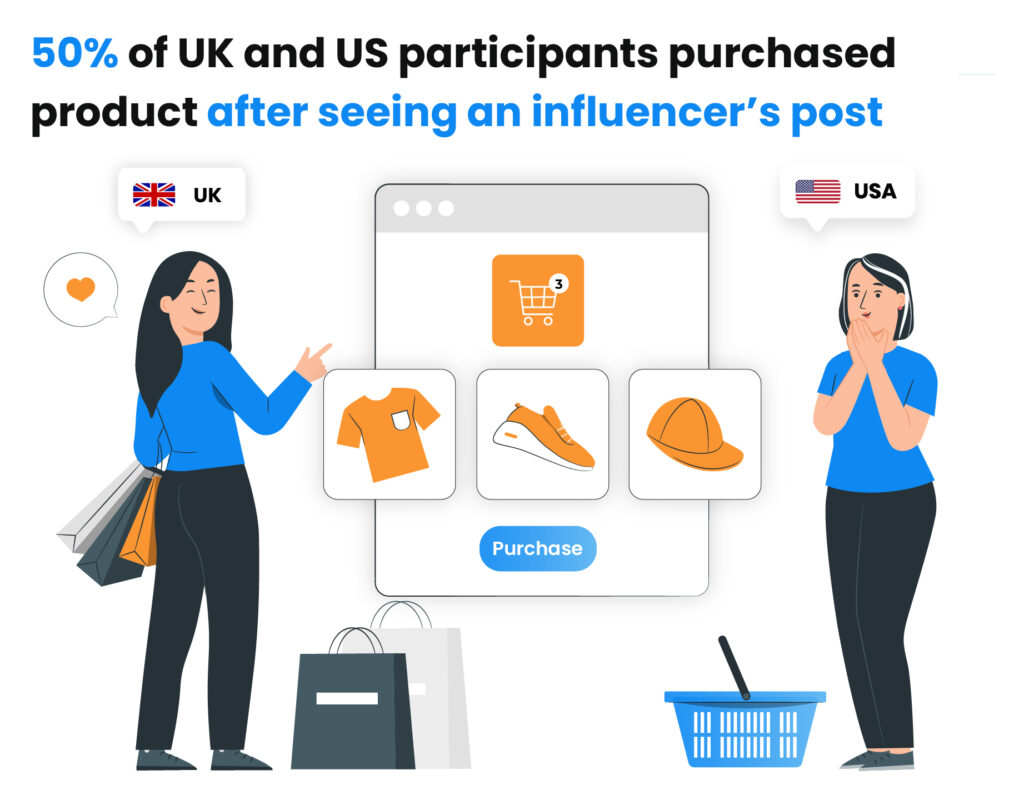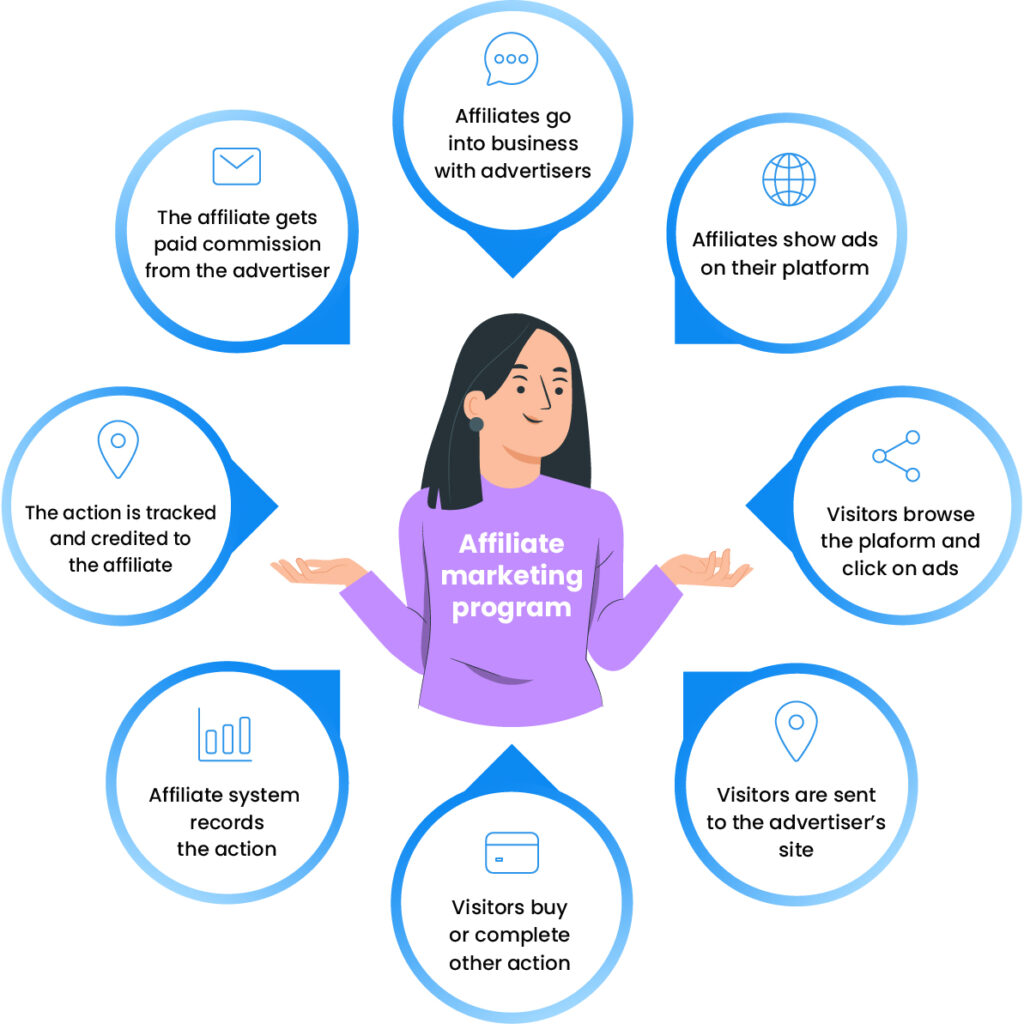Affiliate Marketing Across Sales Funnel Stages
Learn how to leverage affiliates at every stage of the sales funnel—from awareness to action. Discover proven strategies for brand introduction, lead nurturing,...

Discover how to use affiliate marketing throughout your sales funnel to drive awareness, nurture leads, and convert customers. Learn actionable strategies to maximize affiliate benefits across all funnel stages.
Affiliate relationships are powerful marketing tools. But they aren’t just a one-and-done kind of conversation, where you go over expectations and forget about them. In fact, affiliate marketing is at its most powerful when you incorporate it into your broader strategy.
To do that — to get the absolute best out of each affiliate — you’ll want to use them throughout your business’s sales funnel. By leveraging these relationships across the entire customer journey, you will ensure consistent maximized benefits for both parties of these relationships.
And the more value you can get from this tactic, the more you can invest back into other opportunities. It’s a beautiful thing that can quickly snowball into recurring revenue you can rely on, which is every marketer’s dream.
Affiliate marketing has quickly grown into a standard or even foundational piece of how businesses maintain steady revenue, even during a year as irregular as 2020. In fact, affiliates generate 16% of all online orders, which accounts for an estimated $6.8 billion.
A good partnership can turn an affiliate relationship into risk-free marketing . You won’t have to spam someone’s inbox or push ads onto people, because you are relying on someone else to promote your brand to an audience that already trusts them.
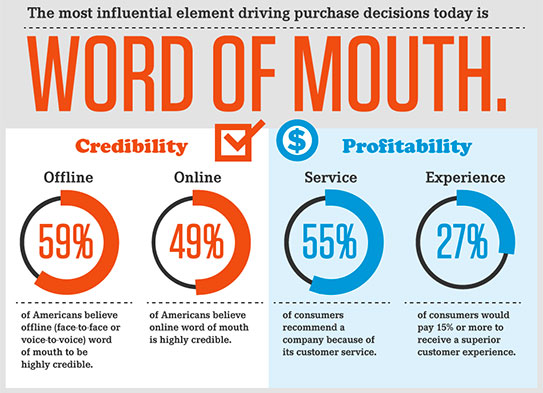
Word-of-mouth marketing is a priceless resource. According to an Adweek study, 74% of people rely on word-of-mouth recommendations. And more than 80% of U.S. consumers will look for recommendations before they decide to purchase anything.
That makes any sort of word-of-mouth marketing as valuable as paid ads or quarterly sales. On one hand, we all want to get recommendations and referrals from people we trust. (That’s been a leading influence in buying habits for as long as humans have been buying/selling goods.)
But on the other hand, relying on external influences means relinquishing some of your control on the conversation about your business. You can use social listening tools to monitor these organic conversations are, but you can’t steer the dialogue or manage the outcome.
Normally, that would be scary. But affiliate marketing lets you achieve a similar “hands-off” approach while still having some say in what that conversation looks like.
At its most basic level, affiliate marketing is a sort of collaboration between one brand (usually an online retailer or eCommerce site) and another brand (the “partner” in this arrangement). But it’s a whole lot more valuable than other sorts of collaborative partnerships.
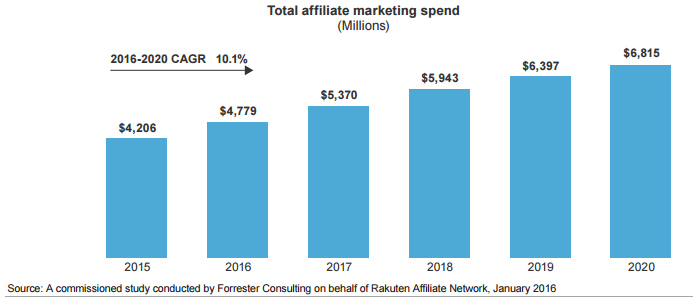
That partner is the one that recommends the online retailer to their audience. You can think of this in terms of social media influencers, but it can just as easily include YouTube channels, niche brands, or even bigger marketplaces that operate in a completely different industry.
This partner — or affiliate — usually receives some kickback for any sales that their work influences. (That’s usually a sales percentage, but it can vary by situation.) They’ll usually need an affiliate link so all of their referral traffic can be tracked over time.
The eCommerce side of the table is a little more straightforward. The company’s primary goal is to find these affiliate partners and then pay them, either for the number of leads or direct sales. It’s a way to use another person or brand’s reputation and established audience to attract new customers that would otherwise be outside their sphere of influence.
You should be able to imagine benefits for both sides of this partnership. And if you can negotiate an affiliate relationship for a good price — or possibly even some kind of cross promotion or featured spot in your marketplace — it can be a very efficient way to reach more people without resorting to cold emails or expensive social ads.
In a way, that’s not so different from a normal partnership or branded content. But the use of affiliate links makes every transaction easily trackable. That keeps you in the driver seat, even while you’re relying on an outside source to build some momentum for you.
In other words, you get all the major benefits of a word-of-mouth marketing initiative. But since you’re using a partnership, you get to choose who is speaking, what they are saying, and where they are directing people’s attention.
You built your sales funnel to map your ideal customer journey. It’s a ladder, really, where each rung can represent a particular phase of that journey. And your sales funnel (or map, or chart, or however else you visualize it) becomes a compass for your wider marketing plans.
That means building content and email strategy that targets each stage, giving people all of the information and tools they need to climb from “new lead” to “brand representative.”
You can find a variety of different models. But at the core of every sales funnel are four primary segments:
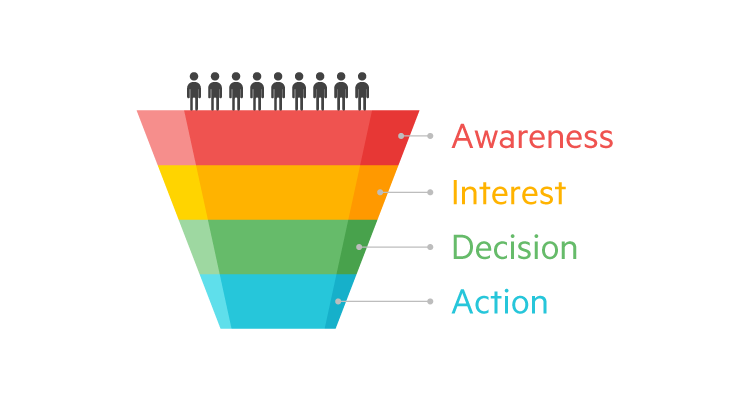
It’s easy to look at a chart like this and see affiliate marketing as being part of one particular segment. Maybe you want them to generate leads for you, directing potential customers to discover your brand. Or maybe you aim for a bottom-of-the-funnel entry point, where your partners refer people who are somewhere between the “Decision” and “Action” phases.
However, limiting the value of your affiliates will only hamstring what they can really bring to your business. What if you had some affiliate marketers inform their audiences about your brand, while another group provided tutorial content, and a third set of affiliates focused on promoting specific benefits of your products?
Affiliates don’t have to be limited to one particular segment of your strategy. In fact, the only way to get the most out of this system is to reconsider how these partners are integrated across your entire system.
A well-defined sales funnel is a pretty standard component of any organization, even if you’re a small business just getting started with affiliate partnerships .
After all, it’s how you visualize an individual person’s familiarity with your company. (It’s also how you can measure someone’s interest and knowledge level, but you can group that in with the more generalized “familiarity.”)
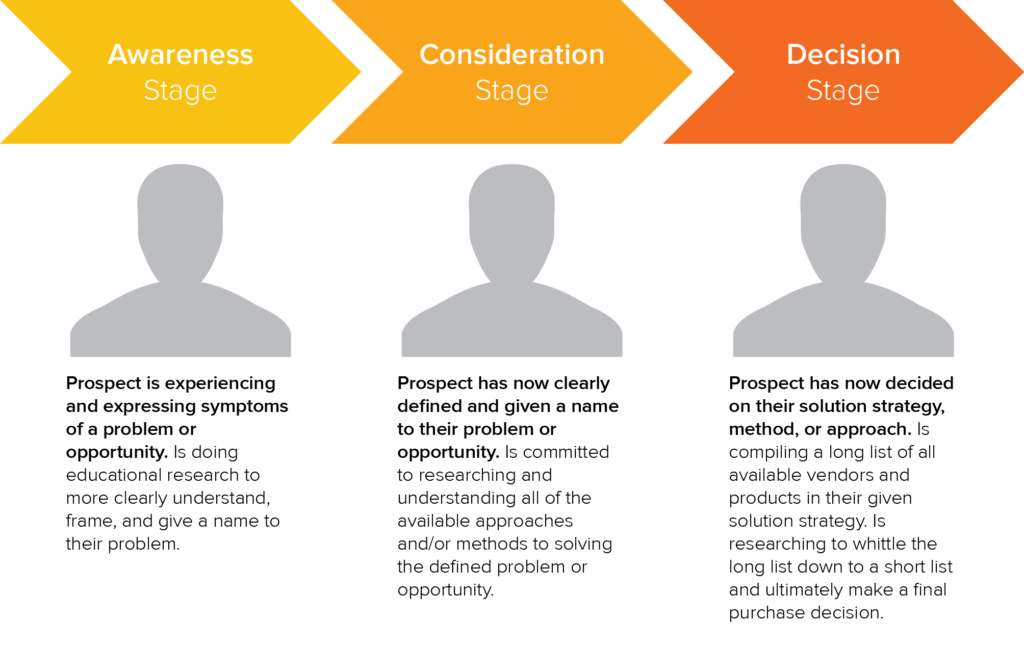
While the buyer’s journey is (at least traditionally) depicted as a horizontal chart, you can see some obvious similarities with the vertically aligned sales funnel. Both are ways to think about someone discovering a brand or product to becoming a vocal advocate for that brand or product.
And both visualizations rely pretty heavily on one thing: People need information before they transition from “Awareness” to “Consideration.” But they rarely go directly to the source to learn about a product.
Instead, they’ll turn to a voice or website they trust.
Conventional wisdom would say that once someone trades their email for a digital resource — like a shot list template or an email marketing guide — you’ll eventually convert that person into a sale. But without affiliate marketing, your site is just one of many they might check out.
74% of online shoppers in the U.S. check multiple affiliate websites before deciding to buy a product. And that means if your strategy isn’t optimized to leverage your partners, then you are missing out on potential sales. More importantly, you are failing to invest in those relationships.
This entire system becomes particularly valuable in a sales funnel, where you can use affiliates to highlight certain features or products to an audience at specific times. It’s just like any other sort of marketing: You don’t want to bombard a new lead with the same details you would send to a lapsed/returning customer. A structured sales funnel forces you to analyze and reorganize your approach to content — a change which will also affect how you use affiliate marketing.
And because affiliate marketing can lead to a variety of outcomes (from a first-time website view to spontaneous purchase), it can also have an impact on every single piece of your funnel. So if these two approaches aren’t being integrated together, you can’t use either one to its full potential.
But what about if you are an affiliate, and not the marketplace? After all, affiliate marketing involves two collaborators. And knowing what role you can play can give you more leverage in these relationships, allowing you to exceed your partner’s expectations and also provide value to the audience you worked so hard to build.
Let’s say that you are a blogger and creator. You’ve read how an affiliate partnership would help a business, but those same benefits extend to you too — mainly a secondary but reliable source of revenue.
Finding ways to improve your efficiency can help you turn your referrals from sporadic to something you can depend on each month. And yes, thinking about your own sales funnel can help you do that.
It’s easy to see the term “sales funnel” and tune out. After all, why would a content creator need to think about marketing strategy?
Well, for the same reason you think about your blog topics, your YouTube background music, your visual brand, or any other piece of how you present yourself online. The truth is that your audience consists of different types of people. And knowing who they are (what they like, what they want to see, where else they go for content, etc.) can help you grow your business or channel in new and exciting ways…even if it means thinking like a marketer.
For bloggers and influencers, a lot of work goes into building a community. It’s not just about good content, but also engaging with an audience. These relationships carry a lot of weight, and they’re the sort of thing that makes you an attractive partner for larger businesses.
First and foremost, it’s never easy to build up a sales funnel. The process requires a little bit of marketing know-how, from having a content calendar to surveying different parts of your audience. That can be difficult for a small business, an independent blog, a YouTube channel, or anything else where you’re working with a small (or nonexistent) budget.
Even if you’ve been doing affiliate marketing for a few years, you know there’s still room for growth. All you need is the right tips to significantly improve your affiliate revenue . One of those tips is having a sales funnel — the sort of thing that can help you align better with your partners and maximize on those relationships to help grow your own platform.
This whole integration can seem like a big ask. If you’re a marketplace, you might wonder whether or not it’s worth shifting around your affiliate relationships or content strategy. And if you’re an affiliate, you’re probably wondering why you should start applying business principles to your blog, channel, or social platform.
But remember this. Affiliate marketing is attributed with 15% of the total digital ad revenue in 2020; similarly, affiliate programs generate 15%-30% of all sales.
An affiliate program has a big influence, both on potential income and sales numbers. That’s especially true when it is folded into a broader marketing strategy, like a sales funnel.
So no matter which side of the table you sit on, incorporating your affiliate marketing into your sales funnel will help everyone get the most value out of these important relationships.
Affiliate marketing involves partnering with individuals or brands to promote your products or services. Integrated within a sales funnel, affiliates can drive awareness, nurture leads, and help convert prospects at different funnel stages.
Affiliates can generate awareness by introducing your brand to new audiences, foster interest through educational content, influence decisions with reviews and comparisons, and drive action by sharing special offers or testimonials.
Limiting affiliates to a single stage reduces their impact. By engaging affiliates across the whole funnel, you maximize their potential to provide value at every customer touchpoint, from awareness to advocacy.
Affiliate links allow precise tracking of referral traffic, conversions, and sales, making it easy to measure the effectiveness of each affiliate and optimize your partnership strategy.
Yes. Content creators and bloggers can use affiliate marketing as a reliable secondary revenue source by aligning their content with relevant affiliate offers and building their own sales funnel to engage their audience.
Drew Gula is the copywriter at Soundstripe, a music and stock video licensing company that provides resources — like storyboard templates and YouTube background music — to help businesses make better marketing content.
Unlock the full potential of your sales funnel by integrating affiliate marketing strategies. Discover tools, tips, and proven techniques to drive growth and recurring revenue.
Learn how to leverage affiliates at every stage of the sales funnel—from awareness to action. Discover proven strategies for brand introduction, lead nurturing,...
Learn how affiliate marketing integrates into sales funnels to drive awareness, nurture leads, and convert prospects. Discover strategies, funnel stages, and be...
Discover why limiting affiliates to a single funnel stage reduces impact. Learn how full-funnel affiliate marketing maximizes value at every customer touchpoint...
Cookie Consent
We use cookies to enhance your browsing experience and analyze our traffic. See our privacy policy.
